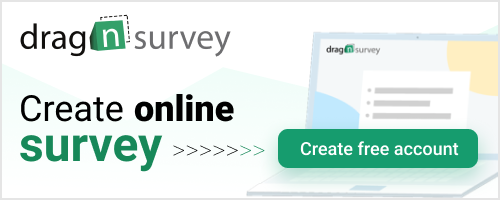When it comes to market research, you need to collect lots of information from your target audience to ensure you make the most of campaigns and product development. However, this can be a challenging prospect. Too many companies don’t complete their market research properly and this can mean bad decisions are made on poor information.
One of the main barriers for improper market research being conducted, is that market research is hard and labor intensive. So, here are some tips to ensure that you’re making your market research less painful and getting the most out of the information you’re collecting.
>> Create your Online Survey with Drag’n Survey, click here

1. Split The Research Into Three Segments
The first step to any market research is to split the process into three sections. These sections are:
- Identifying customer pain points.
- Collection of information related to customer pain points and your product/services.
- Taking action on what the respondents have said in your collection phase.
If you split it into these three simple parts, you’ll find the whole process looks less daunting and easier to manage. You might even be able to manage several market research projects at the same time when you have lots of products/marketing campaigns in development.
2. Identify Customer Pain Points
There are numerous ways you can identify pain points for clients. You might have experience yourself, or you could have spoken to numerous customers who have made complaints while interacting with you. Or alternatively you could have already sent out a survey to identify the problem.
Whatever the way you have collected the information, your respondents will have already indicated what has made them annoyed and what problems they need fixing. These responses are vital, but they might not have all the information you need. So, that is why you need to ask more questions to ensure you have all the data to solve the problem.
3. Collect Information With Ease
The next stage is about data collection. This is when you outreach to your audience to get responses to vital questions that can help you make vital decisions. In the past, the best way to get your questions heard and responded to was to go and setup focus groups and meet the target audience on the street. There were specific problems with this.
Firstly, it was time consuming and demoralizing to staff who would often get rejected when they tried to survey passer-bys. In addition, in focus groups some people would just agree with the more dominate person in the room. This could skew results.
Another problem was the audience sample was very low. This meant it was easier for data to be biased.
Luckily, today there is an easier way for your to collect all the information you need and that is with surveys. These can be distributed online and they have several benefits that there aren’t with physical data collection such as:
- Large amounts of data can be collected within the same amount of time.
- No skewed results because audiences can complete questions without the influence from others.
- Save your staff time by not having them collect the responses from surveys personally.
Surveys have become a very useful tool in market research. They can be sent via email or hosted on a website for users to complete when they visit your site.
Another tip is to also look at audience viewing patterns on your website. What pages/information/blogs are they reading most? You’re likely to see patterns that determine what their pain points are.
4. Take Actions Based On Responses
Now you’ve collected data through surveys and other means, you need to take action based on this. Look through the data and see what trends are appearing. Is there a demand from your customers for certain products or solutions that they can use?
It might be useful to segregate your data into more specific audiences. For instance, millennials often have a different lifestyle to baby boomers, but if your product can be used by both, you might need to separate the groups to see what impacts both of them separately. For instance, millennials are often more motivated by experience, while baby boomers are more interested in financial gains.
This might mean you need to market your new products/services separately, or determine who really is your audience.
Conclusion
Market research is not easy to do. There are numerous problems that can cause your research to miss the vital information or have results skewed. Yet there are ways to limit the risk and this includes following a proper, three step process and utilizing the latest data collection techniques such as monitoring your website and collecting surveys online.
By doing this, you can be certain that your market research is completed accurately and you can make the most of the data you’ve collected.
